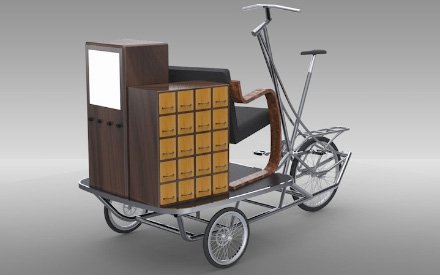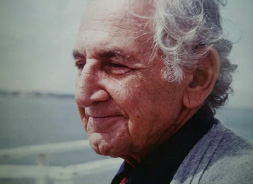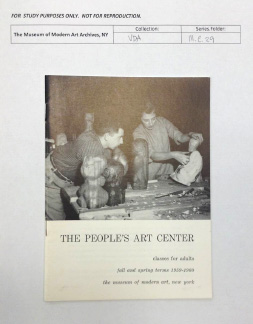Mission/Overview
The D’Amico Gowanus Laboratory Collective (DGLC) is a group of artists, performers, writers, educators and community activists who develop experiential workshops, events and projects in Brooklyn’s Gowanus neighborhood inspired by the life and work of Victor D’Amico, an often-forgotten visionary art thinker and educator who ran the Museum of Modern Art Department of Education from 1937 – 1969, and his wife Mabel, an artist and educator.
Victor D’Amico believed fervently that art is a human necessity that should be experienced by all. His inclusive, experiential, exploratory ideas are profoundly important today when art has drifted away from this essential function. His work was based on early Modernist ideas that promoted art as a holistic lifestyle and stressed the importance of democratic principles and broad access. Through his People’s Art Center, Children’s Art Carnival and War Veteran’s Art Center at MoMA, D’Amico’s work touched countless lives.
D’Amico developed modular, interactive tools, that he called “motivations,” designed to stimulate the creative process through playful exposure to color, light, movement and texture. “Motivations” could also take the form of descriptive texts or poetry, or experiential walks. Individuals were then given art materials and asked to create artwork in environments specially designed by D’Amico.
The Collective’s work will not be a dry repository or simply replicate D’Amico’s work. Rather it will use D’Amico’s ideas as an improvisational stepping off point to develop new creative projects that are adapted to contemporary needs. The program will deepen our connection to our community and place by enabling us reach new Gowanus audiences with a focus on neighborhoods underserved by the art community.
After retiring from MoMA in 1969, D’Amico’s programs were disbanded. He retreated to Long Island taking his tools and archives with him. He spent the last twenty years of his life teaching on a WW I navy barge converted into a community art studio. Today the barge, now the Victor D’Amico Institute of Art, continues to uphold D’Amico’s legacy. Victor and Mabel built by hand a small modernist house near the barge which is preserved today as a house museum.
Collective Members:
Sasha Chavchavadze, Diane Bertolo, Wendy Woon, Abby Subak, Richard Hamburger, Melissa Cooper, Julie Lang, Ute Zimmerman, Sheetal Prajapati, Tammy Pittman, Adeola Enigbokan, Lauren Cannon, Wendy Feuer, Takayuki Yamamoto, Aliza Aufrichtig, Susie Silbert, Cathy Feurst, Charles Goldman, Tatiana Istomina, Tony Stanzione, Sonnet Takahisa, Amy Snider, Maureen Connor, Rob Hickman
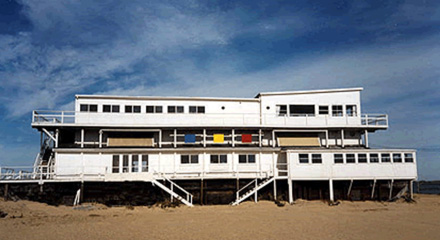
Phase I — Laboratory Sessions
September 2014 – March 2015
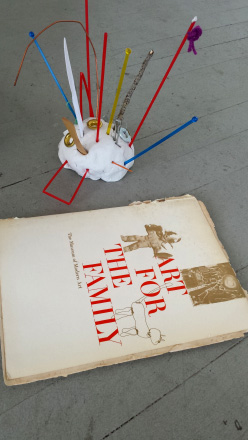 In 2014/15, DGLC held a series of monthly laboratory workshops, examining D’Amico’s techniques and activating his archive (recently relocated to MoMA). Our goal was to place D’Amico’s work in historical context; the Collective worked closely with Wendy Woon, Deputy Director of the MoMA Education Department, as we explored D’Amico’s legacy, and new ways of informing art education and practice. Meetings included a series of powerpoint talks, placing D’Amico in historical context, including talks by: Carol Duncan on early 20th century progressive reform and John Cotton Dana, founder of the Newark Museum; Wendy Woon on Victor D’Amico’s programs at MoMA; artist/educator Adeola Enigbokan on Radical Pedagogies of the 1920s and 30s; curator Susie Silbert on MoMA’s “Useful Objects under Five Dollars” exhibitions in the 1930s and 40s;
In 2014/15, DGLC held a series of monthly laboratory workshops, examining D’Amico’s techniques and activating his archive (recently relocated to MoMA). Our goal was to place D’Amico’s work in historical context; the Collective worked closely with Wendy Woon, Deputy Director of the MoMA Education Department, as we explored D’Amico’s legacy, and new ways of informing art education and practice. Meetings included a series of powerpoint talks, placing D’Amico in historical context, including talks by: Carol Duncan on early 20th century progressive reform and John Cotton Dana, founder of the Newark Museum; Wendy Woon on Victor D’Amico’s programs at MoMA; artist/educator Adeola Enigbokan on Radical Pedagogies of the 1920s and 30s; curator Susie Silbert on MoMA’s “Useful Objects under Five Dollars” exhibitions in the 1930s and 40s;
DGLC sessions also included hands-on art projects adapted from D’Amico’s archive, and related presentations by collective members whose work incorporates community-based, experiential aspects, including a workshop by theater director Richard Hamburger, based on work he has done with prison inmates, and a video presentation of interactive performances with communities of children by Japanese artist Takayuki Yamamoto.
Useful Objects, A DGLC Exhibition
February 7 – March 1, 2015
The exhibition of art and objects was held in the bkbx gallery space at Proteus Gowanus in Gowanus, Brooklyn, and grew out of 2014/15 DGLC laboratory sessions. Using MoMA’s “Useful Objects Under $5” exhibitions that took place during D’Amico’s tenure as a jumping off point, collective members and others were invited to submit their contemporary useful objects bought for under $5 with a description of the object. Artists were also asked to submit work that referenced useful objects. The exhibition included useful objects and artifacts, written descriptions by owners, copies of early MoMA press releases about the MoMA Useful Objects exhibitions, and a video by artist Maureen Connor that referenced the MoMA Useful Objects in Wartime exhibitions.
Surprisingly, there are many highly functional useful objects that can be bought today for under $5, and people who utilize the objects are very attached to them.
Useful Objects Exhibition Statement:
In the late 1930s, during the Great Depression, the Museum of Modern Art’s Department of Industrial Design initiated a series of traveling exhibitions called Useful Objects Under Ten Dollars and Useful Objects Under Five Dollars. The exhibitions were designed to introduce the American public to objects that were a perfect blend of affordability, utility and modernist design, stressing the inherent beauty of materials and spurning extraneous decoration.
The exhibitions, which traveled to hundreds of museums, schools, libraries, community centers and department stores around the country, had the broad pedagogical and democratic aim of bringing art into the home of Americans of all economic means. Rather than commission the objects, MoMA curators, including Alfred Barr and Philip Johnson, searched the country for household objects; the objects were often machine-made and sold in Five and Dime stores. The MoMA Useful Objects catalog resembled early Sears catalogs; printed in black and white, the objects were simply listed with a description, a price, the manufacturer and where they could be bought. Manufacturers received the benefit of increased sales, and MoMA curators became the arbiters of a new, post-World War I national aesthetic.
Useful Objects, an exhibition of art, objects, documents and books, creates a playful dialog with this sometimes forgotten moment in history when art and commerce joined forces towards a seemingly benign, inclusive, utopian goal. The exhibition juxtaposes the past with the starker reality of art and commerce today, while paying homage to the enduring simplicity, timelessness and function of the useful object.
Contributions of art, objects and artifacts by: Kadambari Baxi, Diane Bertolo, Constantin Boym, Sasha Chavchavadze, Charlotte Cohen, Maureen Connor, Tom Damrauer, Nick Defriez, Jeremy Dine, Cathy Feurst, Charles Goldman, Nene Humphrey, Tatiana Istomina,Tom La Farge, Julie Lang, Ksenya Malina, Tammy Pittman, Sheetal Prajapati, PK Ramani, Tony Stanzione, Mike Train, Alexandra Walcott, Wendy Walker, Wendy Woon
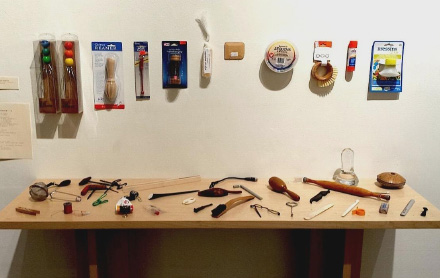
Phase II — Future Projects
Using our knowledge from DGLC laboratory sessions, the Collective plans to apply D’Amico’s multi-faceted legacy to the contemporary Gowanus community. Future projects include:
A DGLC Mobile Cart bringing Gowanus artifacts, books, maps and related hands-on artmaking project to Gowanus communities currently underserved by the art community. Through “chance encounters” with the mobile cart, DGLC hopes to deepen the communities sense of creative context and connection.
Children’s Art Carnival -A carnival inspired by (but not replicating) D’Amico’s Children’s Art Carnival, which traveled around the world, to be offered to the Gowanus Community, possibly along Nevins Street or in other public spaces. The carnival would include interactive, pedagogical projects commissioned by artists. Study original Children’s Art Carnival blue prints currently in the MoMA archive.
